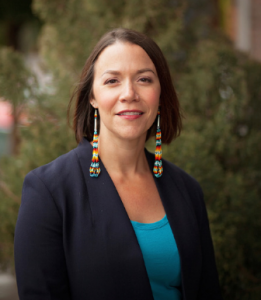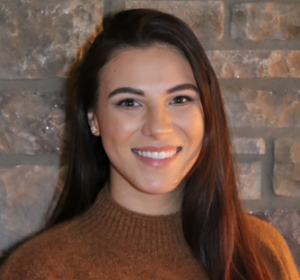Go With the Flow: Indigenous Science in the Language Classroom
by Stephany RunningHawk Johnson and Sequoia Dance-Leighton
The Confederated Tribes of Warm Springs, the Confederated Tribes of the Colville Reservation, and the Coeur d’Alene Tribe are located in what we now call Washington, Oregon, and Idaho in the Pacific Northwest of the United States. Paula Groves Price, Zoe Higheagle Strong, and T. Francene Watson are three professors in the College of Education at Washington State University (WSU) who have dedicated time and energy to cultivate and nurture relationships with educational leaders, Elders, and teachers within these Indigenous communities. Through these relationships and previous projects, as well as a memorandum of understanding (MOU) agreement between WSU and the tribal entities, they envisioned a project to work together on centering Indigenous knowledges and cultures while teaching science and language. Dr. Groves Price, Dr. Higheagle Strong, and Dr. Watson worked closely with contacts at the Paschal Sherman Indian School, the Nespelem Elementary School, the Warm Springs K-8 Academy, and the Coeur d’Alene Tribal School to shape a project that would include cultural and language aspects into the science curriculum desired by the tribes. This project was a collaborative effort that would not have happened without the generous time, energy, and knowledge contributions of the tribal peoples we, researchers and writers, worked with and learned so much from.
In 2017, the team from the three tribes and from the College of Education at WSU received a grant from the National Science Foundation to work on the project they called Culturally Responsive Indigenous Science (CRIS). The three main goals of the CRIS project were to 1) develop and implement culturally responsive Indigenous Science, Technology, Engineering, and Mathematics (ISTEM) curriculum modules that integrate Indigenous knowledge, culture, and language with western science and technology, 2) conduct culturally responsive professional development for teachers to effectively integrate ISTEM curriculum and technology into classroom instruction and assessment, and 3) provide supplemental hands-on enrichment programs for Native American students to engage with ISTEM projects and experiments outside of the traditional school environment and on the WSU campus.
 Stephany RunningHawk Johnson, a member of the Oglala Lakota nation, focuses her research on supporting Indigenous students attending universities and majoring in science fields. Stephany is working with local tribes to incorporate land-based education and traditional ecological knowledges in order to increase Indigenous students’ sense of identity and belonging in a university setting. She is also conducting research on how non- Indigenous instructors can begin to decolonize their teaching practices. All of Stephany’s work is done through an Indigenous feminist lens and is dedicated to supporting nation building and tribal sovereignty as well as empowering Indigenous communities and students in working toward social justice.
Stephany RunningHawk Johnson, a member of the Oglala Lakota nation, focuses her research on supporting Indigenous students attending universities and majoring in science fields. Stephany is working with local tribes to incorporate land-based education and traditional ecological knowledges in order to increase Indigenous students’ sense of identity and belonging in a university setting. She is also conducting research on how non- Indigenous instructors can begin to decolonize their teaching practices. All of Stephany’s work is done through an Indigenous feminist lens and is dedicated to supporting nation building and tribal sovereignty as well as empowering Indigenous communities and students in working toward social justice.
 Sequoia Dance-Leighton is a member of the Shoshone-Bannock Tribes and a descendent of the Assiniboine (Red Bottom Band). She is currently a PhD student at Washington State University in the Cultural Studies and Social Thought in Education Program. Sequoia’s research interests is in Indigenous wellness and collective healing through an Indigenous feminist lens. She is currently working as graduate research assistant where she is exploring Indigenous students’ sense of belonging in school.
Sequoia Dance-Leighton is a member of the Shoshone-Bannock Tribes and a descendent of the Assiniboine (Red Bottom Band). She is currently a PhD student at Washington State University in the Cultural Studies and Social Thought in Education Program. Sequoia’s research interests is in Indigenous wellness and collective healing through an Indigenous feminist lens. She is currently working as graduate research assistant where she is exploring Indigenous students’ sense of belonging in school.